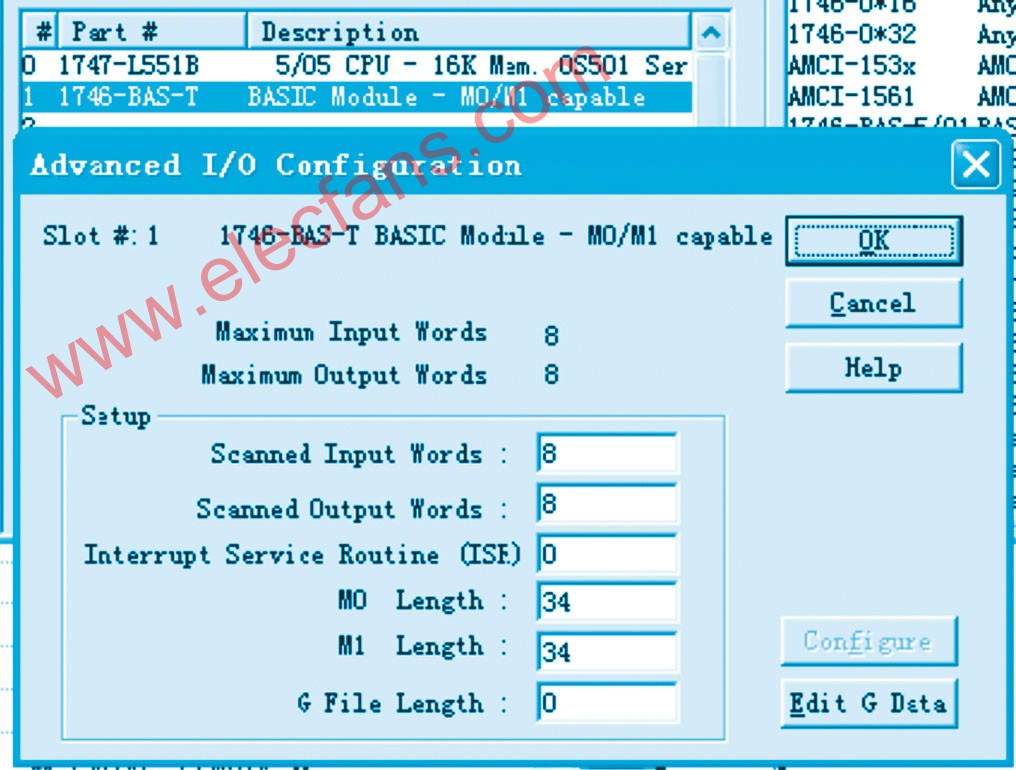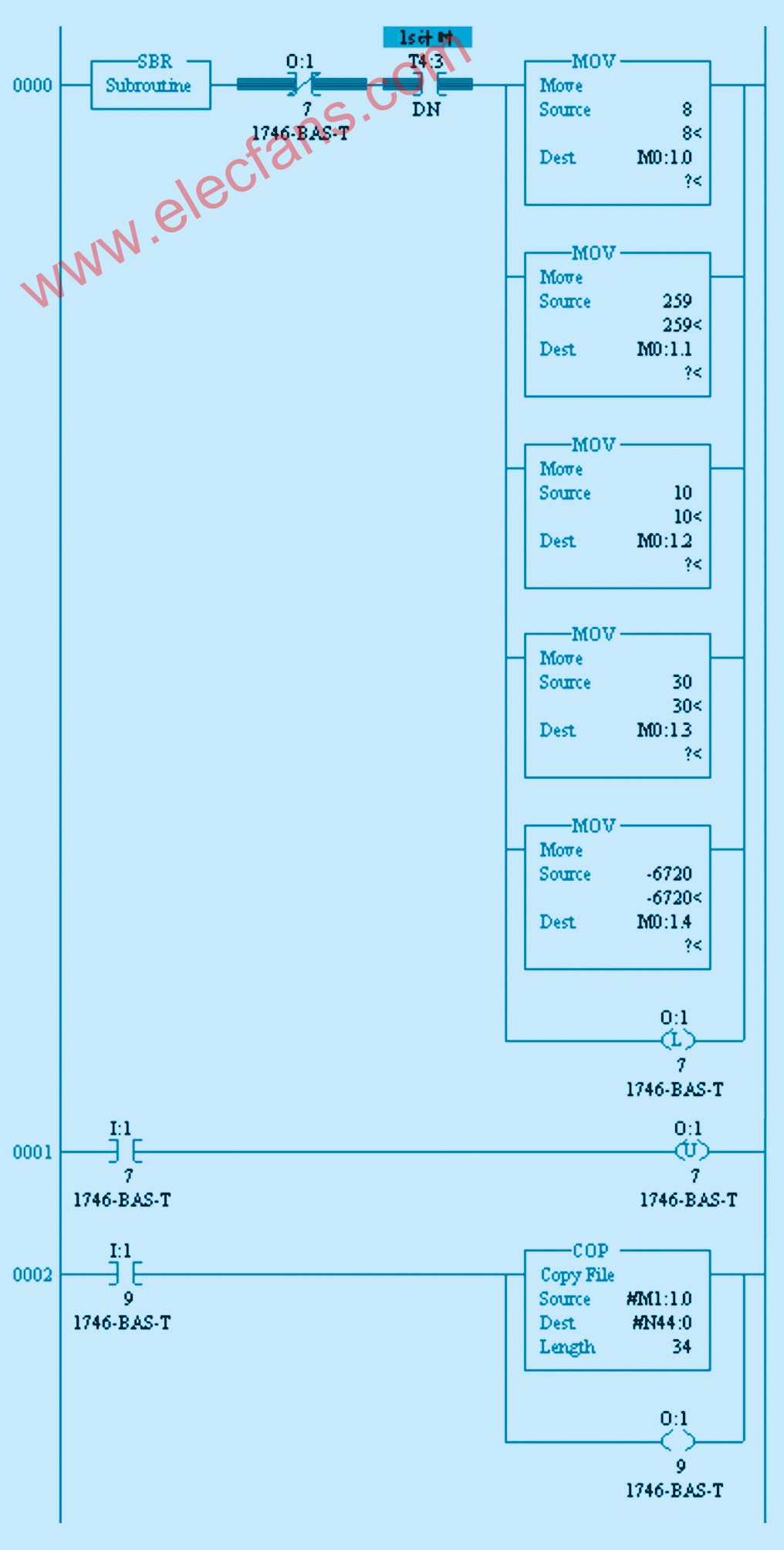1 Introduction
This article takes the 1746-BAS-T (hereinafter referred to as BAS-T) module produced by Rockwell Automation as an example, and introduces the practical application of PLC communication module in the monitoring system of hydropower plant in detail.
Usually, the hydropower station first converts the AC, such as voltage, current, power factor, frequency, active power, reactive power, etc. into analog signals through the transmitter, and then connects to the PLC's mold-in module, and the PLC completes the data collection . For a group of PT and CT signals, if in this way, the monitoring system needs to be equipped with at least 6 transmitters, occupying 10 PLC mold into the module channel. At present, only one AC sampling device can collect the above-mentioned AC quantity signals at the same time, but usually the AC sampling device has only one communication output port and cannot output analog quantity. If the PLC can communicate directly with the AC sampling device, then the above problem is solved.
2 BAS-T module software and hardware introduction
2.1 Introduction of BAS-T module hardware The BAS-T module produced by Rockwell Automation is a high-performance communication module for SLC500 series PLC. The BAS-T module has two programmable serial ports and supports RS-232, RS-422, and RS-485 communication. It can communicate with a SLC500 CPU through the 1746 I / O backplane or communicate with the DH485 network through its own DH485 port. Inside the BAS-T module, there is a 24kB electrically-retained RAM, and an 8kB or 32KkB non-electrically-retained memory module can also be selected. The BAS-T module has eight LED lights to indicate its working status. The appearance of the BAS-T module is shown in Figure 1. The definition of LED lights is shown in Figure 2.

Figure 1 Appearance of BAS-T module

Figure 2 BAS-T module indicator definition
2.2 Communication port characteristics of BAS-T module
(1) PRT1: The electrical isolation port can communicate with user equipment, and it is also the programming port of the module. Support RS-232, RS-422, RS-485 communication, optional baud rate 300 ~ 19200bps.
(2) PRT2: electrically isolated port can communicate with user equipment or communicate with MODEM according to AB DF1 protocol. Support RS-232, RS-422, RS-485 communication, optional baud rate 300 ~ 19200bps. (Note: When PRT2 adopts AB DF1 protocol communication, DH485 port communication will be prohibited.)
(3) DH485: The non-electrically isolated port is connected to the DH485 network, but it cannot be directly connected to the DH485 network. It must be connected to the DH485 network through the 1747-AIC module.
2.3 BAS-T module editing software Rockwell Automation provides a set of BASIC development software for BAS-T modules-1747-PBASE, which works in the MS-DOS environment and can be used to configure BAS-T T module can also compile, upload and download BASIC programs.
3 Application of the BAS-T module in the actual project In the monitoring system of Hubei Yanziqiao Hydropower Station, the unit LCU adopts the SLC500 series PLC, and the BAS-T module is installed, and a model produced by Zhuhai Parrot is installed externally. Acquire AC signals of three-phase voltage, three-phase current, active power, reactive power, frequency, power factor of the unit for the AC sampling device of PMAC9900. The BAS-T module communicates with the PMAC9900 device and reads the AC quantity signal measured by the PMAC9900 device.
3.1 Hardware connection
(1) The PMAC9900 device adopts the standard MODBUS communication protocol and supports RS-485 communication interface. First set the communication parameters of PMAC9900 as follows:
Baud rate: 9600bps
Station address: 1
(2) Use PRT1 of the BAS-T module as the programming port and PRT2 as the device communication port, connect the AC sampling device through RS-485, and the DH485 port is not used. Set the communication parameters through the jumpers on the BAS-T module as follows:
PRT1: RS-232 mode, the default communication parameters.
PRT2: RS-485 mode, ASCII communication port.
(3) Connect the BAS-T module and the PMAC9900 device as shown in Figure 3.

Figure 3 Device connection
3.2 BAS-T module software programming
(1) The BAS-T module adopts the special BASIC language. The BASIC language first uses the "PUSH" command to set the parameters, and then executes the operation through the "CALL" command. The specific format is as follows:
PUSH x // Set the parameters of the instruction
CALL y // Execute the instruction code y
(2) Run PBASE.exe in the MS-DOS environment, the edited and compiled program is as follows:
0 REM BTRAN V1.03, C: ABBASIC9900.BDL, 01-03-04,01: 36PM
// Software compilation information
10 MODE (PRT2,19200, N, 8,1, N, R)
// Set communication port and communication parameters
20 PUSH 1
30 CALL 37
// Clear the input buffer of PRT2
40 PUSH 3
50 CALL 120
// Clear M0 file and M1 file of SLC (Note 1)
60 PUSH 4
70 PUSH 1
80 PUSH 0
90 PUSH 0
100 PUSH 1
110 CALL 23
// Send the data stored in the M0 file of SLC through PRT2
120 POP SOK
// Output the result of CALL 23 instruction execution
130 PUSH 2
140 PUSH 65
150 PUSH 0
160 PUSH 1
170 PUSH 0
180 PUSH 0
190 PUSH 1
200 CALL 22
// Transmit the data received through PRT2 to SLC M1 file
210 POP ROK
// Output the result of CALL 22 instruction execution
220 PUSH 1
230 CALL 37
240 GOTO 240
// Automatically execute the program (Note 2)
>> EOF <<
// End of program note 1: M0 file and M1 file are data storage files for data exchange between CPU and BAS-T module.
Note 2: The BAS-T module realizes the automatic cycle execution of the module program through a specific language format, so that the BAS-T module can continuously read the data of the PMAC9900 device.
(3) Connect the PRT1 of the BAS-T module and the serial port 1 of the programming computer with the 1747-CP3 communication cable, and download the compiled program to the BAS-T module through the PBASE software.
3.3 PLC software programming
(1) Hardware configuration
When the BAS-T module reads the data of the PMAC9900 device, the length of the message sent is 8 bytes, which requires 4 word registers; the message length of the PMAC 9900 device normally returns data is 65 bytes, which requires 33 word registers; In addition, the statistics of the number of letters in the BAS-T module occupy 1 word register, so M0 length and M1 length are both set to 34 words (the length only needs to be greater than the actual letter length). Configure the BAS-T module in the PLC programming software RSLogix500 as shown in Figure 4.

Figure 4 Configuring the BAS-T module in RSLogix500
(2) Software programming â— Organize communication messages. Put the total length of the data in M0: 1.0, and then put the messages that need to be sent through the serial port into the addresses starting with M0: 1.1, and put 2 bytes for each address.
â— Set 1/7 to 1 after the data is put in to inform the BAS-T module that the message to be sent has been put into the address correctly.
â— The BAS-T module sends the specified number of bytes of data through serial port 2.
â— After receiving the correct message, the external device returns the corresponding message according to the communication protocol.
â— The BAS-T module writes the data received on the serial port 2 to the M1 file, and puts the total number of bytes of the received data in the first word address.
â— The BAS-T module sets I: 1/9 to 1 to inform the CPU that the received message has been correctly placed in the address.
â— The CPU takes out the message in the M1 file and sets 1/9 to 1 to inform the BAS-T module that the data has been taken out.
The programming example is shown in Figure 5.

Figure 5 Software programming in SLC
3.4 System operation situation Since Yanziqiao Hydropower Station was put into operation in 2004, the BAS-T module has been working normally, and there has been no failure in communication data transmission with the PMAC9900 AC sampling device. Facts have proved that the BAS-T communication module is safe and reliable for the application of the hydropower station monitoring system, and it can completely replace the traditional "transmitter + molded module" connection method and become a more economical and efficient solution.
4 Conclusion
The use of PLC communication module can enable PLC to quickly acquire a large amount of external data and make data collection faster; by programming in SLC, it can also realize a serial port of BAS-T module to communicate with several external devices at the same time.
Compared with the conventional hard-wired connection method, the use of BAS-T communication module only needs to place a communication cable, no other hard-wired and transmitters are needed, and the mold channel is not occupied, which saves hardware costs. The use of PLC communication modules also improves the automation level of hydropower stations and reduces equipment maintenance and repair costs.
Grille Led Panel Light is the new style among the panel lights. We are the manufacturer of producing energy saving interior lighting. This type of led grille light is in high quality and easy to install. There are three color temperatures with cool white, warm white and natural white of panel lights. It is used by non-isolated driver and built-in driver. The unique feature of the grille panel light is divided in double head and four head. These grille panels are mainly apply to home, office and school, etc.
Grille LED Panel Light
Four Headed Grille Light,Led Embedded Grille Panel Light,Square Grille Panel Light,Ceiling Grille Led Panel Light
Jiangmen Lika Lighting Electrical Appliances Co., Ltd , https://www.lika-led.com